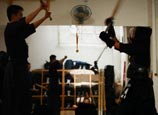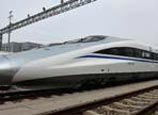
WASHINGTON, June 27 (Xinhua) -- U.S. space agency NASA said Thursday its spacecraft Voyage 1 is about to become the first human-made object to cross the boundary from our solar system into interstellar space.
New data revealed in the journal Science suggested that the spacecraft, launched 35 year ago and now more than 18 billion km from the Sun, has been exploring an unexpected region of the heliosphere, the bubble of charged particles around our Sun, since late last August.
In the region called the magnetic highway, Voyager 1 has detected two of the three signs of interstellar arrival: rapid disappearance of the solar-originating charged particles and low- energy galactic cosmic rays from far outside that originate from dying stars.
NASA said the spacecraft has not yet seen the third sign, an abrupt change in the direction of the magnetic field, which would indicate the presence of the interstellar magnetic field.
"If you looked at the cosmic ray and energetic particle data in isolation, you might think Voyager had reached interstellar space, " said chief scientist Ed Stone of the NASA Jet Propulsion Laboratory, which manages the mission.
"But the team feels Voyager 1 has not yet gotten there because we are still within the domain of the sun's magnetic field," he said in a statement.
Researchers said they do not know exactly how far Voyager 1 has to go to reach interstellar space. They estimate it could take several more months, or even years, to get there.
Voyager 1 and its twin spacecraft, Voyager 2, were launched in 1977. They toured Jupiter, Saturn, Uranus and Neptune before embarking on their interstellar mission in 1990. Measuring the size of the heliosphere is part of the Voyagers' mission. Voyager 2 is 15 billion km from the Sun and still inside the heliosphere.
















 A growing thirst for water safety
A growing thirst for water safety


![]()
